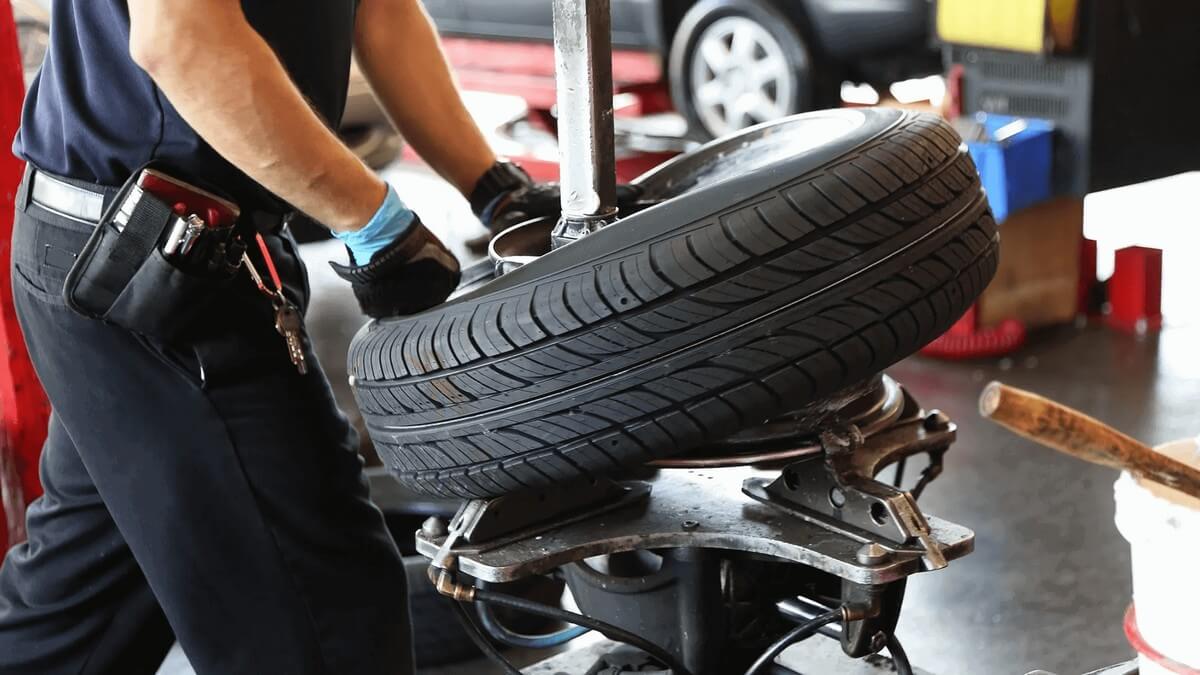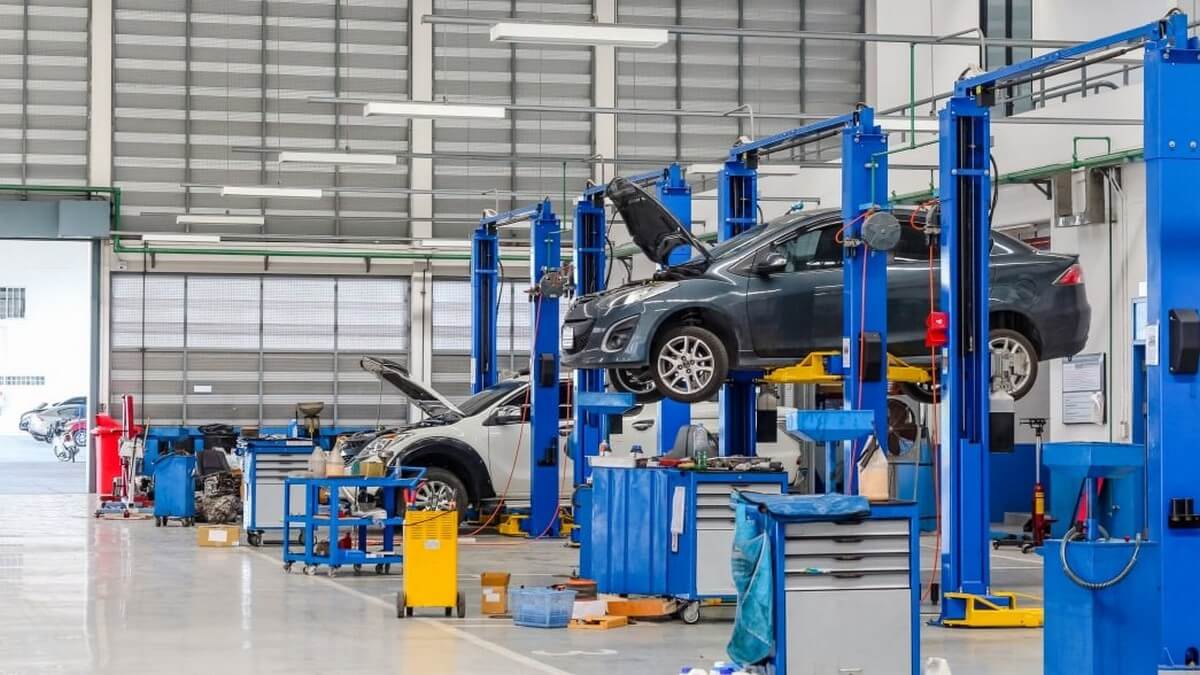
Starting and running an auto repair shop without a business plan is like going on a road trip without a map. You might know your destination, but you’ll likely get lost along the way. A business plan is essential for guiding your shop's growth, securing funding, and ensuring long-term success.
Many auto repair shops start small, often just a single mechanic with a few tools and a passion for fixing cars. But as the business grows, so do the challenges. Suddenly, you’re juggling customer service, managing employees, ordering parts, and keeping the books balanced. It’s easy to feel overwhelmed.
That’s where a business plan comes in. It’s a detailed document that outlines your shop’s goals and the steps you need to take to achieve them. It covers everything from your shop's services to marketing strategies, financial projections, and more — basically, your shop’s roadmap to success.
In this guide, we’ll walk you through the process of developing a comprehensive business plan for your auto repair shop. Whether you want to expand your services, attract more customers, or simply get more organized, a solid business plan can help you reach your goals.
So, let’s dive in and start building a plan that will drive your business forward.
Understanding the Basics
What is a Business Plan?
A business plan is a detailed document that outlines the strategy, goals, and steps necessary to run a successful business. Think of it as the blueprint for your auto shop. It helps you map out your business's future, guiding you through every stage of growth, from startup to expansion. A good business plan covers all aspects of your business, including your market analysis, organizational structure, services, marketing strategies, and financial projections.
Why Your Auto Repair Shop Needs a Business Plan
Having a business plan offers several significant advantages for your auto repair shop:
- Financial Management: A business plan helps you manage your finances effectively. It allows you to project your revenue, plan for expenses, and ensure that your shop remains profitable. With a clear financial plan, you can avoid cash flow problems and make better decisions about investing in new equipment or hiring additional staff.
- Operational Efficiency: A well-thought-out business plan outlines the day-to-day operations of your shop. It helps you streamline processes, manage your time more efficiently, and ensure that your shop runs smoothly. By having a plan in place, you can reduce downtime, improve customer service, and increase overall productivity.
- Strategic Growth: Your business plan will include your long-term goals and the steps you need to take to achieve them. This strategic approach allows you to grow your business methodically and sustainably. Whether you want to expand your services, open a new location, or increase your customer base, your business plan will guide you in making these goals a reality.
- Problem Solving: Every business faces challenges, and your auto repair shop is no exception. A business plan helps you anticipate potential problems and develop strategies to address them. By identifying risks and planning for them in advance, you can navigate obstacles more effectively and keep your business on track.
- Securing Funding: A business plan is essential if you need to secure a loan or attract investors. Lenders and investors want to see that you have a clear vision for your business and a plan to achieve your goals. A detailed business plan demonstrates your commitment and increases your chances of securing the funding you need.
Creating a business plan might seem daunting, but it doesn’t have to be complicated. It's about clearly defining what you want to achieve with your shop and how you plan to do it. This plan will serve as a reference point, helping you stay focused and make informed decisions as your business evolves.


Step-by-Step Guide to Developing a Business Plan
To give you a clear idea, here’s a detailed guide to help you develop a comprehensive business plan for your auto repair shop. This method applies to whether you already own an established repair shop or are just about to get started on the business.
Executive Summary
The executive summary is a quick overview of your business plan. Think of it as the introduction that highlights the key points.
- Overview of Your Auto Repair Shop: Start by briefly describing your shop. Mention its name, where it’s located, and the services you offer. For example, “Joe’s Auto Repair, located in downtown Springfield, offers comprehensive repair services for cars and trucks.”
- Mission Statement: Write a short statement about what your shop stands for and what you aim to achieve. For instance, “Our mission is to provide high-quality, affordable auto repair services with a focus on customer satisfaction.”
- Business Objectives: List your main goals. These could be things like increasing your customer base, expanding your services, or improving your revenue. Keep it clear and concise.
Business Description
This section gives more details about your shop. It’s like telling the story of your business.
- Business Structure: Explain how your business is set up. Are you the sole owner, or do you have partners? Is your business a sole proprietorship, a partnership, or an LLC? This affects your taxes and liability.
- Location and Facilities: Describe where your shop is located and what it’s like. Is it a small garage, a large facility, or part of a commercial complex? Mention any special features that help you stand out.
- History of the Business: Share how your shop started. Maybe it began as a hobby or a small side business and grew from there. Highlight any significant milestones, like moving to a larger location or adding new services.
- Services Offered: List the main services you provide. Do you specialize in engine repairs, brake services, or general maintenance? Be specific about what you do best.
Market Analysis
Understanding your market helps you know who your customers are and how you can serve them better.
- Industry Overview: Give a brief overview of the auto repair industry. Mention how it’s growing and any trends you’ve noticed. For example, “There’s a growing demand for electric vehicle repairs.”
- Target Market Identification: Describe your typical customers. Are they mostly local residents, commuters, or businesses? What are their needs and preferences? For instance, “Our main customers are local families who need reliable, affordable car repairs.”
- Competitive Analysis: Look at other auto repair shops in your area. What are their strengths and weaknesses? How does your shop compare? Knowing this helps you find ways to stand out.
- Market Trends and Opportunities: Mention any trends or opportunities in the market that you can take advantage of. Maybe there’s a growing demand for specific services or a lack of repair shops in your area.
Organization and Management
This section outlines how your shop is run and who’s in charge.
- Organizational Structure: Create a simple chart showing who does what in your shop. This could be just you and a few employees, or a more detailed setup if you have a larger team.
Management Team: Introduce the key people in your business, including yourself. Mention their roles, experience, and what they bring to the table. If you’re the sole owner, talk about your own background and skills. - Roles and Responsibilities: Clearly define what each team member does. This helps avoid confusion and ensures everyone knows their duties. For example, “John handles customer service and scheduling, while I focus on repairs and parts ordering.”
- Hiring and Staffing Plans: Explain your plans for hiring more staff as your business grows. What positions will you need, and what qualifications are you looking for? This shows you’re planning for the future.
Services and Products
Dive deeper into what you offer and how you plan to provide value to your customers.
- Detailed Description of Services Offered: Provide more information about each service. Explain what’s involved and why it’s important. For instance, “Our brake service includes inspection, pad replacement, and rotor resurfacing to ensure safe braking.”
- Pricing Strategy: Outline how you set your prices. Are they competitive with other shops? Do you offer discounts or special deals? Make sure your pricing reflects the value you provide.
- Unique Selling Proposition (USP): Identify what makes your shop unique. This could be your excellent customer service, specialized skills, or convenient location. For example, “We offer free pick-up and drop-off service for all customers within 10 miles.”
- Future Service/Product Offerings: Mention any new services or products you plan to add. This shows you’re thinking ahead and ready to meet changing customer needs.


Marketing and Sales Strategy
Attracting and retaining customers is key to your shop’s success. Here’s how to do it.
- Marketing Plan: Detail how you’ll promote your shop. This could include online marketing (website, social media), local advertising (flyers, radio ads), and community involvement (sponsoring local events).
- Advertising and Promotions: Describe any special promotions or advertising campaigns you’ll run. This might include discounts for first-time customers, seasonal offers, or loyalty programs.
- Sales Strategy: Explain how you’ll sell your services to customers. This could involve training your staff to upsell additional services, offering bundled packages, or simply providing excellent customer service to encourage repeat business.
- Customer Retention and Loyalty Programs: Outline how you’ll keep customers coming back. This could include loyalty programs, follow-up communications, and incentives for referrals.
Financial Projections
Planning your finances helps ensure your shop’s profitability and sustainability.
- Startup Costs and Funding Requirements: List all the initial expenses to get your shop up and running. This might include equipment, rent, licenses, and initial inventory. If you need funding, specify how much and for what purpose.
- Revenue Model: Explain how your shop will make money. This includes your pricing strategy, sales projections, and any other revenue streams. For example, “We expect to generate $10,000 per month from repair services and an additional $2,000 from parts sales.”
- Profit and Loss Projections: Provide a forecast of your expected income and expenses over a specific period, usually three to five years. This helps you understand when you’ll break even and start making a profit.
- Cash Flow Statement: Show your expected cash flow, detailing when money will come in and go out. This helps ensure you have enough cash on hand to cover expenses. For instance, “We expect a positive cash flow by the third month of operation.”
- Break-even Analysis: Calculate the point at which your revenue will equal your expenses, meaning you’re not making a profit but not losing money either. This helps you understand the minimum performance needed to stay afloat.
Operational Plan
The operational plan outlines the day-to-day activities that keep your shop running smoothly.
- Day-to-Day Operations: Describe the daily tasks required to run your shop. This might include scheduling appointments, ordering parts, managing inventory, and customer service. For example, “Our daily operations include opening the shop at 8 AM, checking appointments, and ordering parts needed for the day’s repairs.”
- Supplier and Vendor Relationships: Explain how you’ll manage relationships with suppliers and vendors. This includes finding reliable suppliers, negotiating terms, and ensuring timely delivery of parts and materials.
- Equipment and Technology Needs: List the tools, equipment, and technology your shop needs to operate efficiently. This might include diagnostic tools, lifts, and software for managing appointments and inventory.
- Quality Control Measures: Detail how you’ll ensure high-quality service. This might involve regular training for staff, standardized procedures, and customer feedback mechanisms. For instance, “We conduct weekly quality checks and encourage customers to leave reviews.”
SWOT Analysis
A SWOT analysis helps you understand your shop’s strengths, weaknesses, opportunities, and threats.
- Strengths: Identify what your shop does well. This could be anything from skilled staff to excellent customer service or a convenient location. For example, “Our strength lies in our experienced technicians and loyal customer base.”
- Weaknesses: Acknowledge areas where your shop could improve. This might include things like outdated equipment, lack of marketing, or limited services. Be honest about where you can do better.
- Opportunities: Highlight external factors that could benefit your shop. This could be trends in the auto repair industry, new technologies, or unmet customer needs. For instance, “There’s a growing demand for electric vehicle repairs in our area.”
- Threats: Recognize potential challenges your shop might face. This could include competition, economic downturns, or changes in regulations. Knowing these threats helps you prepare for them.
Follow this step-by-step guide, and you’ll be able to create a comprehensive business plan that will help your auto repair shop thrive and grow.


Implementing and Monitoring Your Business Plan
Setting Goals and Milestones
Setting clear, achievable goals is crucial for successfully implementing your business plan. These goals will serve as benchmarks to measure your progress and keep you focused on your objectives.
- Short-term Goals: These are the goals you aim to achieve within the first year of implementing your business plan. They should be specific, measurable, achievable, relevant, and time-bound (SMART). Examples include increasing your customer base by 20%, launching a new marketing campaign, or reducing waiting times by 10%.
- Long-term Goals: These are the objectives you aim to achieve over a longer period, typically three to five years. Long-term goals might include expanding your shop, introducing new services, or achieving a specific revenue target. These goals should also be SMART to ensure they are realistic and attainable.
- Key Performance Indicators (KPIs): KPIs are specific metrics that help you track your progress toward your goals. For an auto repair shop, KPIs might include customer satisfaction scores, average repair time, revenue per repair, and customer retention rates. Regularly reviewing these KPIs will help you stay on track and make informed decisions.
Regular Review and Adjustment
A business plan is not a static document; it should evolve as your business grows and market conditions change. Regularly reviewing and adjusting your plan ensures it remains relevant and effective.
- Importance of Regular Reviews: Set aside time periodically to review your business plan. This could be monthly, quarterly, or annually, depending on your needs. During these reviews, assess your progress toward your goals, analyze your KPIs, and identify any areas that need improvement.
- How to Adjust the Plan Based on Performance: If you find that certain goals are not being met, or if new opportunities or challenges arise, adjust your business plan accordingly. For example, if a new competitor enters the market, you might need to revise your marketing strategy. If a particular service is more popular than anticipated, consider expanding it.
- Involving Your Team: Regular reviews and adjustments should involve your team. Their insights and feedback are valuable in identifying what’s working and what’s not. Encourage open communication and involve them in the decision-making process. This not only helps improve your business plan but also fosters a sense of ownership and commitment among your staff.
- Documentation and Tracking: Keep detailed records of all changes made to your business plan and the reasons behind them. This documentation helps you track your progress over time and provides valuable insights for future planning.
Indeed, implementing and monitoring your business plan effectively requires dedication, flexibility, and a proactive approach. This dynamic approach allows you to respond to new challenges and opportunities, keeping your business competitive and thriving in the ever-changing auto repair industry.
Frequently Asked Questions (FAQ)
Q: What is the most important part of a business plan for an auto repair shop?
While all business plan sections are important, the most critical part can vary depending on your specific needs and goals. Generally, the Financial Projections section is crucial because it outlines your expected income, expenses, and profitability.
This section helps you understand the financial health of your business and is essential for securing funding. Additionally, the Market Analysis and Marketing and Sales Strategy sections are vital for understanding your market and attracting customers. Together, these sections provide a comprehensive view of your business’s potential and strategic direction.
Q: How often should I update my business plan?
Your business plan should be a living document that evolves with your business. It’s recommended to review and update your business plan at least once a year. However, you should also update it whenever significant changes occur, such as:
- Introducing new services
- Expanding or relocating your shop
- Changes in the market or competitive landscape
- Major financial changes, such as securing new funding or experiencing a significant increase or decrease in revenue
Regular updates ensure that your business plan remains relevant and accurately reflects your current business situation and future goals.
Q: What tools can help me create a business plan?
Several tools and resources can help you create a comprehensive business plan:
- Business Plan Software: Tools like LivePlan, Bizplan, and Enloop provide templates and step-by-step guides to help you build your business plan.
- Templates: Many websites offer free business plan templates, including the Small Business Administration (SBA) and SCORE. These templates can be customized to fit the needs of your auto repair shop.
- Financial Tools: Use accounting software like QuickBooks or Xero to generate financial projections and manage your finances.
- Market Research Tools: Platforms like IBISWorld and Statista provide industry reports and market analysis data, helping you conduct thorough market research.
These tools can simplify the process and ensure that your business plan is professional and comprehensive.
Q: How can I ensure my business plan is realistic and achievable?
To create a realistic and achievable business plan, follow these steps:
- Set SMART Goals: Ensure that your goals are Specific, Measurable, Achievable, Relevant, and Time-bound. This makes them more manageable and attainable.
- Conduct Thorough Research: Base your market analysis, financial projections, and strategies on solid data. This includes understanding your target market, analyzing competitors, and knowing industry trends.
- Be Conservative with Estimates: When projecting income and expenses, it’s better to be conservative. Overestimating revenue or underestimating costs can lead to financial strain.
- Seek Expert Advice: Consult with business advisors, mentors, or experienced shop owners. Their insights can help you set realistic goals and develop practical strategies.
- Regularly Review and Adjust: Continuously monitor your progress and adjust your plan as needed. This flexibility allows you to stay on track and respond to new challenges or opportunities.
Q: Do I need a business plan if my auto repair shop is already successful?
Yes, even if your auto repair shop is already successful, a business plan is still beneficial. Here’s why:
- Strategic Growth: A business plan helps you identify opportunities for growth and expansion, whether it's opening a new location, offering new services, or increasing your market share.
- Financial Management: It allows you to manage your finances more effectively, plan for future investments, and ensure long-term sustainability.
- Market Adaptation: The auto repair industry is constantly evolving. A business plan helps you stay ahead of market trends, adapt to changes, and remain competitive.
- Operational Efficiency: It can improve your operational efficiency by streamlining processes and identifying areas for improvement.
- Risk Management: A business plan helps you anticipate potential challenges and develop strategies to mitigate risks.
Last Words
No matter where you are in your journey with your auto repair shop, having a business plan is essential and always worth the investment. Whether you're just starting out or have been in the game for years, a well-crafted business plan can provide the clarity and direction needed to navigate the challenges and seize the opportunities that come your way.
In an industry that’s always evolving, staying relevant and operating at your peak requires more than just technical skills. It requires strategic thinking, careful planning, and a willingness to adapt. Your business plan is the roadmap that will guide you through this journey, helping you make informed decisions, optimize operations, and secure a prosperous future for your shop.
So, I encourage you to take the time to create, review, and refine your business plan—because the road to success is always under construction.
